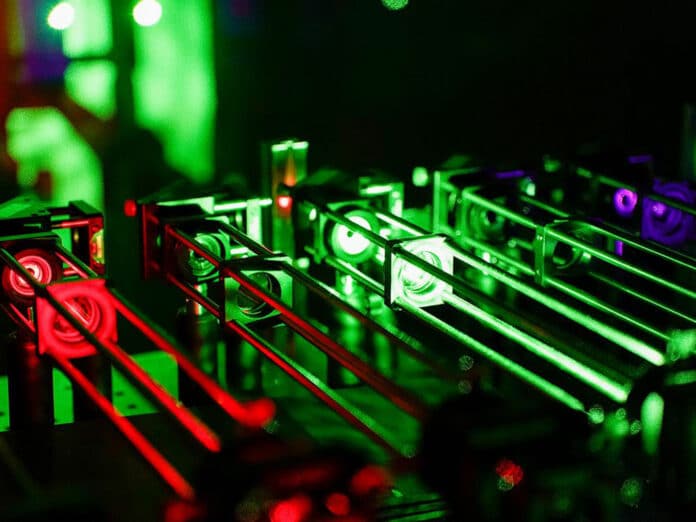In a recent study, researchers have discovered that the movement of neurons is caused by the push and pull of motor proteins. These proteins, which are responsible for transporting various molecules and structures within cells, were found to play a crucial role in the displacement of neurons.
A Penn State-led team of researchers has discovered how motor proteins compete to transport molecular cargo between the cell body and the synapse in neurons. The study, which used single-molecule fluorescence microscopy and computational modeling, focused on how kinesins interact with the motor protein dynein during cargo transport. The findings, published in eLife, provide insights into the normal cargo transport process and could inform future research on neurodegenerative diseases like Alzheimer’s.
Neurons require robust, long-distance, bidirectional cargo transport by kinesin and dynein motors to function. Disrupted transport in neurons is linked to neurogenerative diseases. The tug-of-war model is not sufficient to account for the range of bidirectional transport activities in cells.
Cellular and in vitro studies of bidirectional transport have provided important information about the specific isotypes and numbers of motors present on cargo during transport, as well as characterizing cargo dynamics and the codependence of opposite directionality motors.
An elegant method that fuses single-stranded DNA to each motor links them together through complementary DNA base pairing and tracks the motor pairs by two-color total internal reflection fluorescence (TIRF) microscopy has been developed to directly track kinesin and dynein motor pairs in vitro.
The study involved observing the behavior of motor proteins within neurons using advanced imaging techniques. The researchers found that these proteins work in a coordinated manner to generate the forces necessary to move neurons in different directions. This movement is crucial for a variety of neuronal processes, including the formation of synapses and the growth of axons and dendrites.
“Kinesin and dynein move along microtubules, which are over 1,000 times smaller than a piece of hair,” said corresponding author William Hancock, Penn State professor of biomedical engineering (BME).
“Because of the microtubules’ structural polarity, kinesin motors bind to a cargo and pull it in one direction, carrying it toward the synapse, while dyneins bind and move in the opposite direction, back to the cell body of the neuron. When both motors bind to a cargo load at the same time, a competition between the two motors ensues, and how each performs determines how fast and in what direction the cargo will travel.”
Researchers have found that different types of kinesin motors use distinct strategies to effectively compete with dynein during bidirectional transport. The study observed how kinesin motors from three different families moved along microtubules using single-molecule fluorescence microscopy.
The researchers found that despite their differences, all three types of kinesin performed equivalently against dynein. Further analysis revealed that each kinesin family uses family-specific mechanochemical strategies to compete against dynein. Understanding the intracellular transport system can help make advancements in the study of neurodegenerative diseases such as Alzheimer’s, Huntington’s, and Lou Gehrig’s disease.
The study involved observing the behavior of motor proteins within neurons using advanced imaging techniques. The researchers found that these proteins work in a coordinated manner to generate the forces necessary to move neurons in different directions. This movement is crucial for a variety of neuronal processes, including the formation of synapses and the growth of axons and dendrites.
The study used single-molecule fluorescence microscopy to observe the movement of proteins along microtubules. Researchers took a single kinesin motor from each of the three families and linked it to dynein to study their interactions.
They developed a computational model based on the experimental results to understand the different approaches used by the three kinesin types to compete against dynein. The researchers also plan to put the motors under different mechanical loads by connecting them to proteins with longer pieces of DNA to further analyze their movements under the microscope.
Researchers wanted to understand how cells regulate the movement of proteins called kinesin and dynein along tiny structures in cells called microtubules. They found that different types of kinesin motors generate enough force to compete against dynein, which was unexpected. They used a computer model to simulate the movement and found that fast reattachment of kinesin motors compensates for their tendency to detach under load, making them robust transport motors.
Overall, this study provides important insights into the fundamental mechanisms that underlie neuronal movement and highlights the critical role that motor proteins play in this process.
Journal Reference:
- Allison M Gicking, Tzu-Chen Ma, Qingzhou Feng, Rui Jiang, Kinesin-1, -2, and -3 motors use family-specific mechanochemical strategies to effectively compete with dynein during bidirectional transport. eLife. DOI: 10.7554/eLife.82228
